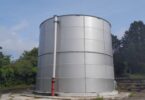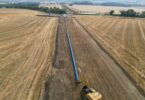Digital sustainability, a key concept in today’s world, stems from the far-reaching digital transformation that companies have to tackle and the need for them to exploit their data to add value. Understanding this concept and how to be digitally sustainable in the water sector is also essential in terms of flexibility, operability and cost savings.
Digital sustainability is a must in this day and age. Although we have lived through different industrial revolutions, none of them is comparable to the so-called Industrial Revolution 4.0, which entails the profound digital transformation of companies. It involves technological changes, as well as shifts in company culture, in the way we communicate, organizational flexibility and even in the different strategies required. Yet data exploitation is always the driving force behind all these changes.
In the face of these developments, water utilities have to implement changes so that they can offer a better service, making the most of the characteristics of this new industrial transformation such as 5G, greater operational agility, interconnectivity, more data, and greater access to information. However, these changes must be preceded by a comprehensive assessment of all the areas that make up a utility, pinpointing the ones which require improvement.
However, it is important to highlight the difference between sustainable digital transformation and digital sustainability. While it is true that the former refers to the use of technology in an environmentally friendly way, digital sustainability in the water sector can be defined as the process by which companies access and exploit their data thanks to intelligent solutions and applications to integrate this data, regardless of the vendors. In this regard, Chema Nebot, Business Development Director at Idrica, points out that digital sustainability “means the entire company speaks the same language, and is able to create improvement indicators (KPIs) and dashboards to enable it to make the best decisions”.
Advantages of digital sustainability in the water sector
As the Idrica executive points out, digital sustainability means companies can improve communication, standardizing language and avoiding information silos. However, there are other advantages that should also be taken into account: scalability, durability, improved operational management, cost reductions, and interconnectivity
Scalability
In this sense, the digital sustainability of water utilities guarantees the smooth operation of the system regardless of the number of users. In this case, we are talking about horizontal scalability. There is also vertical scalability in which more resources are added to meet the needs of a larger number of users. In any of its forms, digital sustainability guarantees that the system responds despite the increase in users and data.
Durability
Digital sustainability guarantees longer system life cycles thanks, in part, to the digital transformation process, which does away with the need to have several suppliers, or the implementation of solutions such as GoAigua, a tool that offers a holistic overview of operational digital infrastructure components, bringing all the systems into one, standardizing language and avoiding the need to constantly change parts of the systems to achieve this coordination.
Improved operational management
As previously mentioned, digital sustainability in the water sector means the company speaks the same language. This will lead to improvements in operational management, greater control over situations, real-time alerts about possible incidents, shorter response times, and improved functions in general, thanks to automation.
Cost reductions
Companies can reduce costs thanks to greater durability and improved operational management, since there will be no need to replace infrastructures, delay processes or involve more stakeholders in them.
Interconnectivity
One of the main advantages is, without a doubt, the ability to interconnect systems to bring data together and make recommendations for action based on real-time information.
This interconnectivity also means that information silos can be broken down.
Digital transformation of utilities
Along these lines, Jorge Helmbrecht, Business Development Manager at Idrica, said at the UPM Water Digital Meeting held at the Polytechnic University of Madrid at the end of October, that digital transformation “is key to the conservation of water resources, to decision-making and to the improvement of demand management”. This is why it is essential to understand utilities’ digital transformation processes so as to respond to these challenges and also to comprehend why digital sustainability is fundamental.
Here, there are two distinct processes:
The bottom-up process. In this case, digital transformation is carried out sequentially, as specific problems arise or when there is a need to improve a work indicator, such as leaks and the detection of anomalies. This process is quick to implement and brings fast results. However, there is a risk of increasing information silos, thus affecting operability.
The top-down process, in which digital transformation is carried out in a well thought-out manner, following a roadmap. This process involves the entire company, as it also entails a change in the utility’s mindset. It requires more effort as it is a holistic change, although the medium- and long-term results are more far-reaching.
In any case, digital transformation is a must for water utilities, which have no choice but to redefine their processes and organizational culture to keep pace with current circumstances. Digital sustainability must be factored into this process if utilities are to become more efficient in terms of water management, offer a better service to consumers and reduce their carbon footprint.







